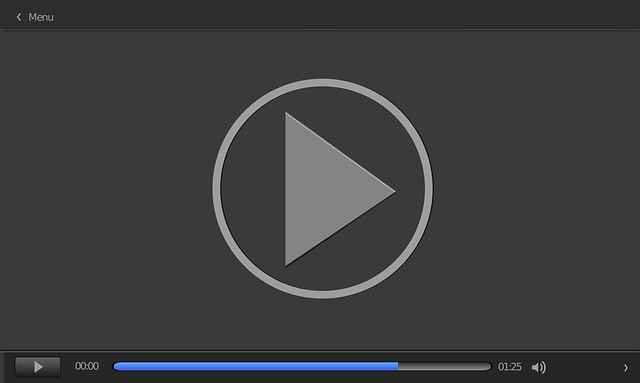Video compression techniques like x264/x265, exemplified by open-source tools like DivX, significantly enhance online video experiences for Linux users. By balancing quality and file size through bit rate adjustments and resolution settings, users can optimize playback of high-fidelity videos on various Linux systems. Ensuring codec support, hardware acceleration, and thorough testing are crucial steps to play DivX on Linux smoothly, fostering a vibrant community dedicated to advanced video compression and playback capabilities.
Experience seamless video playback without sacrificing quality with our guide to compressing video data on Linux. We break down the essentials of video compression, highlighting why it matters and how it impacts your viewing experience. Discover the power of the DivX Codec, a versatile tool tailored for Linux users, allowing you to enjoy high-quality videos in smaller file sizes. Learn to optimize settings for the perfect balance between quality and file size, ensuring smooth Play DivX on Linux with ease.
Understanding Video Compression: The Basics and Why It Matters

Video compression is a process that reduces the size of video files while preserving their essential quality. It’s like packing a suitcase full of clothes, ensuring you can fit everything you need for your trip, but still having those clothes look and feel as good as new when you unpack them. In the case of videos, this means minimizing file sizes without noticeable loss in visual or audio quality. This is crucial, especially for online streaming and video sharing platforms, where efficient compression enables faster loading times and easier accessibility over various devices, including Linux systems.
For those using Linux, playing DivX format videos is now more accessible than ever before, thanks to advanced compression techniques. DivX is known for its high-quality video playback capabilities, and with modern codecs like x264 or x265 (HEVC), users can compress videos effectively while maintaining excellent visual fidelity. This ensures that both original content creators and end-users benefit from smaller file sizes without sacrificing quality, making online video consumption a smoother and more enjoyable experience.
DivX Codec: A Powerful Tool for Linux Users

The DivX Codec is a powerful tool that allows Linux users to play and compress DivX videos seamlessly. This codec, with its advanced compression techniques, ensures that video data is efficiently encoded without any loss in quality. For those looking to enjoy DivX content on their Linux systems, this open-source solution is a game-changer.
By implementing the DivX Codec, Linux users can effortlessly compress and play high-quality videos, ensuring an optimal viewing experience. Its compatibility with various media players makes it easy for folks to set up and use, fostering a vibrant community around video compression and playback on Linux platforms.
Optimizing Settings for Quality and File Size Balance

When optimizing video compression, striking a balance between quality and file size is key. Tools like DivX, playable on Linux systems, offer advanced settings to tailor this balance according to your needs. Start by adjusting bit rate—a measure of data transfer per second—which directly impacts both quality and size. Lowering the bit rate reduces file size but may lower visual fidelity.
Experiment with resolution too. Lower resolutions yield smaller files, suitable for streaming or sharing over limited bandwidth. Higher resolutions preserve more detail, ideal for local playback on powerful hardware. Additionally, consider encoder-specific settings in DivX, such as quantization parameters and encoding methods, which can fine-tune the compression process to achieve a quality-size tradeoff that’s right for your project.
Testing and Troubleshooting: Ensuring Seamless Playability on Linux

Testing and troubleshooting are essential steps in ensuring that compressed video data, such as DivX files, plays seamlessly on Linux systems. One common challenge users face is compatibility issues due to various factors like codec support, container formats, and hardware acceleration. To Play DivX on Linux, it’s crucial to verify the following:
First, confirm that your Linux distribution includes the necessary codecs and libraries for DivX playback. Many modern distributions offer pre-installed media players with built-in DivX support. Alternatively, you can install dedicated codec packs like K-MPlayer or VLC Media Player, which typically include all required components. For hardware acceleration, check if your graphics driver is up to date, as this can significantly improve video playback performance. Testing involves attempting to play diverse DivX videos and checking for smooth playback without buffering or stuttering. Troubleshooting tips include verifying internet connections (for streaming content), updating media players, and checking system logs for errors related to video decoding.
Video compression is a vital skill for any user looking to balance file size and quality, especially on platforms like Linux. By understanding the fundamentals of video compression and utilizing powerful tools such as the DivX Codec, users can ensure they’re able to play and share videos seamlessly. Optimizing settings allows for a perfect blend of crisp visuals and manageable file sizes, making it possible to enjoy high-quality media without sacrificing storage space or streaming performance. With these strategies in place, Linux users can fully embrace the world of video by smoothly playing DivX files on their systems.
